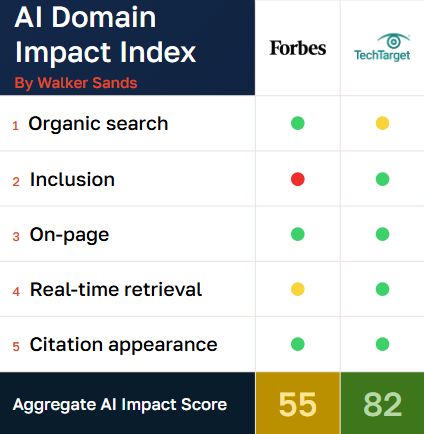In the ever-evolving landscape of strategic communications, AI is rapidly transforming how PR professionals approach earned media. From trendspotting and competitor analysis to social amplification and media monitoring, AI tools have become an integral part of modern PR strategies.
Recent data underscores this shift: According to MuckRack’s State of AI in PR report, 75% of PR professionals now utilize generative AI in their work, a significant increase from previous years. Notably, communications agencies are at the forefront of this adoption, integrating AI technologies more swiftly than their in-house counterparts. However, this rapid integration comes with its challenges. A concerning 55% of strategic communications professionals report the absence of formal AI usage guidelines within their organizations. This not only highlights a critical gap in governance and best practices, but becomes a barrier to utilizing AI for more strategic tasks.
At Walker Sands, we recognize that AI is fundamentally reshaping how brands are discovered and how they engage. We’ve not only developed agency-wide guidelines on ethical AI use, ensuring that our strategies are both innovative and responsible, but are also consistently and strategically developing resources on how AI can rethink client outcomes.
AI is undoubtedly reshaping PR, and embracing this shift will be crucial for optimizing earned media strategies.
AI’s Transformation of the Media Landscape
B2B decision-makers are no longer confined to conventional information channels. They now engage with AI-curated content, personalized news feeds and intelligent search engines that tailor information to their specific needs. This shift requires that brands expand beyond traditional media strategies to ensure visibility across these emerging platforms.
In addition, AI platforms are significantly boosting traffic to B2B websites. Companies leveraging AI-driven content strategies have reported notable increases in website visitors, as AI algorithms effectively match users with their desired content.
What does this mean for communications professionals? It emphasizes the importance of developing hyper-personalized strategies that address individual decision-makers’ specific pain points and interests. Additionally, optimizing content for AI-driven search algorithms that understand context and intent enhances visibility in search results. Monitoring advancements in AI technologies and staying agile to embrace new AI-driven platforms and tools as they emerge is also crucial. By adopting these approaches, brands can enhance their visibility and foster deeper engagement with key audiences in an AI-influenced media environment.
Rethinking Tier 1: How AI is Changing the Media Hierarchy
An emerging strategic move to ensure brand visibility across AI platforms is Generative Engine Optimization (GEO). GEO focuses on optimizing content to align with AI algorithms to enhance a brand’s presence in AI-generated responses.

To navigate this shift, Walker Sands has developed the AI Domain Impact Index, a proprietary tool to help determine which content and publications will influence AI-generated responses across various platforms. This approach upends long-held perceptions of what defines “top-tier” outlets, which have largely been relegated to those like Forbes, New York Times and Wall Street Journal. On the contrary, the index shows that specialized outlets, such as TechTarget, may have a more significant impact in AI platforms. This, combined with some top news outlets’ reluctance to embrace platforms like ChatGPT, accentuates the need for communications professionals to reassess and broaden media strategies, focusing on platforms that yield the highest influence in the AI landscape.
Securing coverage in high-scoring outlets on the AI Domain Impact Index can substantially elevate brand awareness. As AI platforms increasingly source information from these domains, brands featured on them are more likely to be cited in AI-generated content, thereby reaching a wider audience. This amplification effect is significant for brands aiming to enhance their visibility, and communications teams must redefine “influence” in an AI-dominated information ecosystem.
The PR Playbook for AI Search Optimization
Integrating these approaches requires a paradigm shift, especially when stakeholders are accustomed to prioritizing more traditional tier 1 outlets. Communications professionals must effectively convey the importance of targeting AI-influential platforms to stakeholders who may be hesitant to deviate from conventional methods. Utilizing tools like the Walker Sands AI Domain Impact Index provides tangible evidence to support this strategy, demonstrating how non-traditional outlets can offer substantial benefits in the AI era.
Other areas to consider:
- Modifying Measurement: Traditional KPIs, such as media mentions and sentiment analysis, while still valuable, do not capture the full impact of AI on brand visibility. PR professionals need to evolve their measurement and reporting frameworks to include how earned media placements influence AI-generated search results. This involves monitoring how often and in what context a brand appears in AI-driven outputs, providing a more comprehensive view of a brand’s digital footprint.
- Shifting Strategy: AI-driven search algorithms amplify content that demonstrates specific traits, such as authority, trustworthiness and expertise. When developing content, it’s critical to ensure it is in-depth and well-researched to improve visibility and credibility. It’s equally key to implement tools and processes to track how frequently and in what context the brand appears in AI-generated outputs, providing insights into AI-driven brand perception.
- Moving Mindset: Using proof points such as the AI Domain Impact Index, communicators need to help executives and stakeholders understand why the definition of tier 1 media has broadened and that AI-forward media is just as crucial – if not more – than the legacy outlets. This can help them prioritize outlets that are favored by AI platforms to enhance the likelihood of brand mentions in AI-generated search results.
By embracing these approaches – and staying informed about the ever-evolving updates in AI algorithms and search behaviors – B2B communications teams can effectively navigate the complexities of AI-driven search. The result: stronger brand visibility, engagement and, ultimately, modernizing impact in an increasingly digital world.
Interested in learning more about how Walker Sands public relations services could help strengthen your PR strategy? Reach out to our team today.


